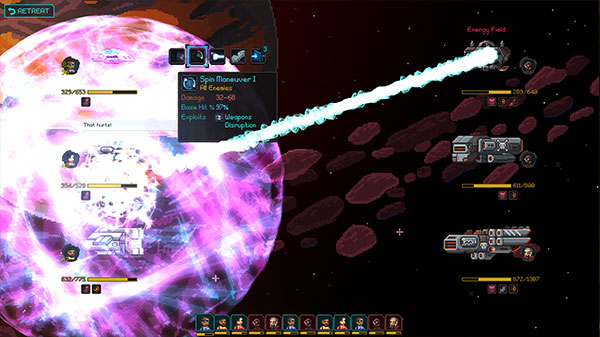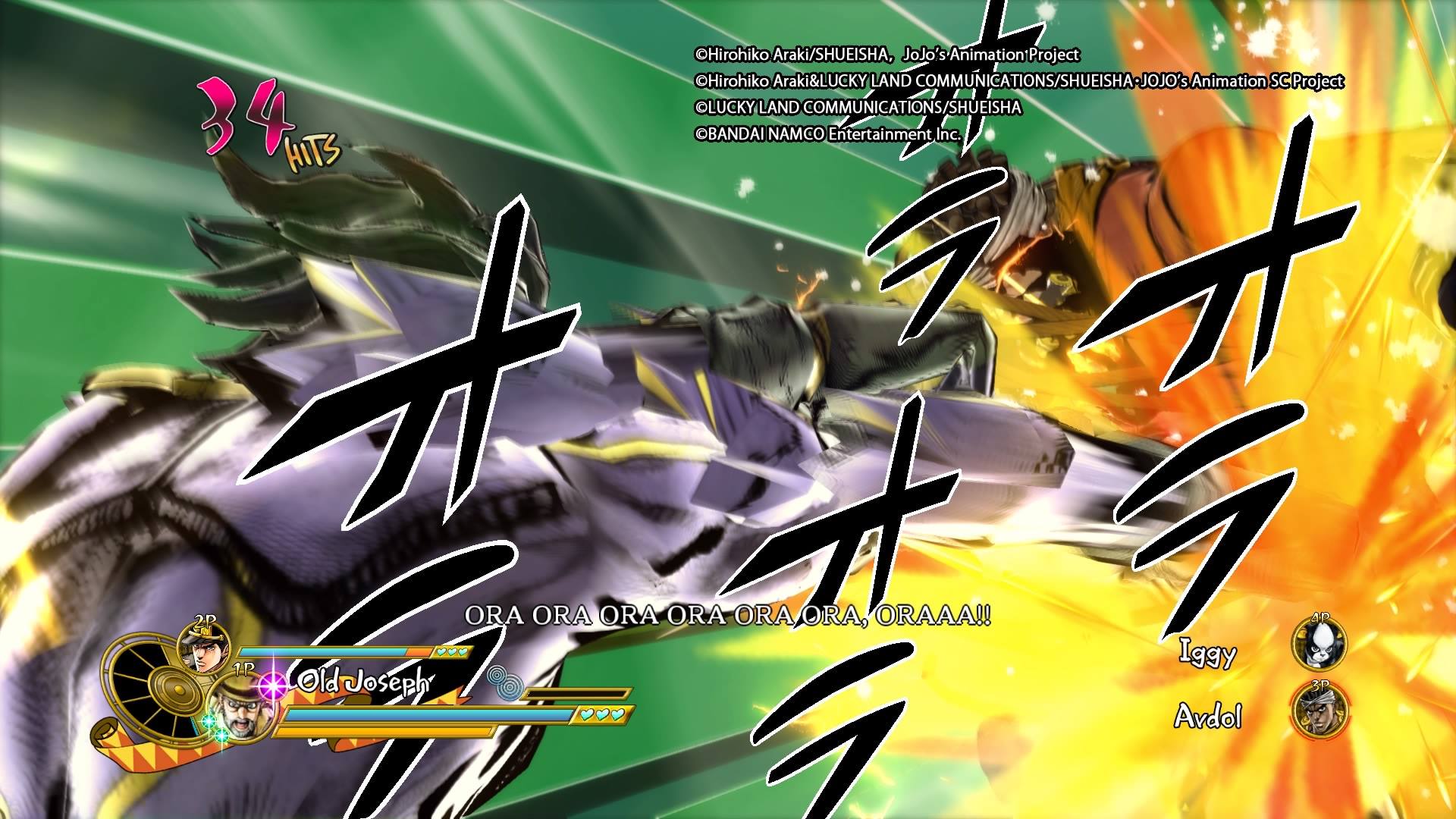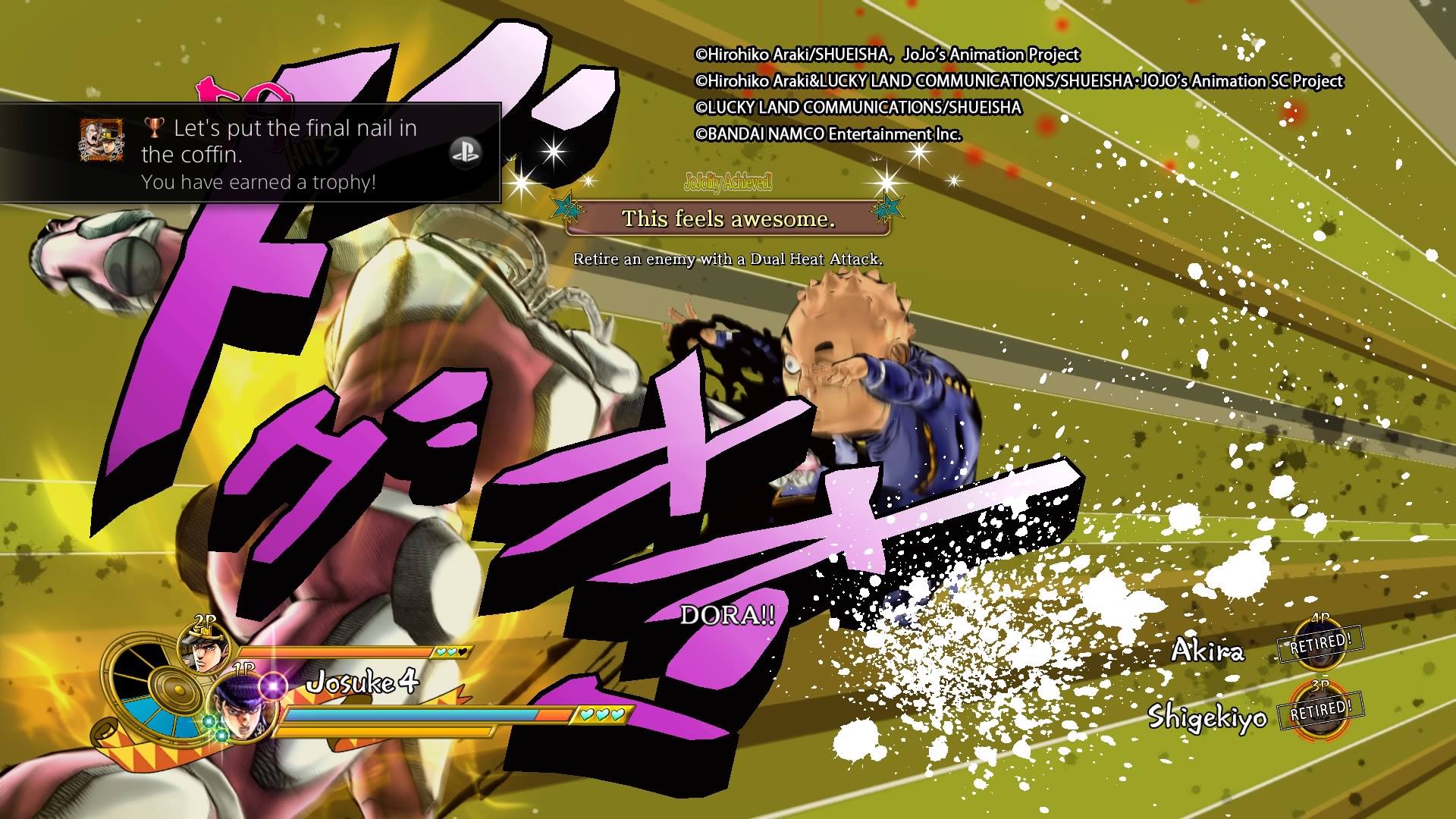Vourbot returns from Pax West with a hands on review of Super Galaxy Squadron EX…
Hello, All. Vourbot reporting in from PAX West with some amazing news: There is a shmup here.
It’s been three or four years since a traditional shmup has graced the expanse of glowing screens here at the Seattle Convention Center!
I did my speed run- left my colleagues in the dust so they wouldn’t slow me down- and I went here, there, to, fro at top speed, turned a corner, and in my periphery, saw the blooming firework fountain that says, “That might be a shmup!”.
It was two youngsters from Baltimore, and I think a third in the wings, presenting the game Super Galaxy Squadron EX. The name was so generic that I was ready to see an underdone muffin of iphone app-ness. I stepped in. I remembered the graphics from something I’d seen on steam- Super Galaxy Squadron— My review of that game was… puny game with good intentions. Basically, single background pixel fest, probably designed for the iphone, but still unable to hide it’s gentle sophistication in it’s basic respect for the fine shmups of the past– mostly in the graphics, basic movement and speed, and marriage of explosion and sound- which were all above average. But it was still too simple of a game for me to celebrate.
And you have to remember, I still think that video games are magic. I have no idea how hard they are to make or.. anything! I just like the art form of “the shmup”.
After talking to the two a little bit, I got where they were coming from.
The one who seems to have been in charge was Nick Clinkscales. And here’s some blogage he wrote, that will supplement this article!
http://www.gamasutra.com/blogs/NickClinkscales/20150116/234350/Super_Galaxy_Squadron_prepostmortem_or_how_a_pixel_artist_pretended_to_be_a_developer_for_a_year_and_things_got_weird.php
I’m posting it right up front, because I think this is some heavy isht@#– the art form I love is on the brink, I’m not ready to become the artist, and neither was he it seems. But he did it!!
He describes himself (well, I’m going to describe him as) a pixel artist who has been compelled to throw his pixels into context by dabbling with programming. And then here’s my list of assumptions about him:
1. If drawing ANYTHING, why not draw a spaceship. Booyah!
2. Once you’ve committed to spaceships, you’ve got to program the thing, and luckily, shmups are the easiest thing to program in the world. At least that’s what I imagine, ’cause I don’t know anything at all about it. I’ve just always thought that the mechanics were so simple that it’d be so easy to express yourself, in this medium, as a programmer, and that’s why I’ve got such a chip on my shoulder about the lack of indie shmups at PAX in years past.
3. Once you’ve committed to that much, you’d have to do a little research- or I guess you could just dink around with your Nintendo memories, but you know, it takes a lot of time. so why not try to make it good.
4. So this guy did the research- he looked at the top 10 lists of shmups and tried them out, quickly found out what he liked about them, and quickly saw the appeal of them- even though the whole while he wasn’t even particularly into them, and his whole goal was to make a shmup that he liked– that the layman would like. –That the people who are frustrated by shmups would like. Again, probably because he didn’t want to waste all his time making a piece of art that no one would look at.
5. After researching the pinnacles of the genre, there’s no going back. It’d be pointless. Shmups are cool. They are superior. His game has easy modes that a shmupper would barf at. It has hard modes that a shmupper would worship. It has variety that anyone critical of shmups would like.
And that’s what he explained to me, and a little in the article I posted– that he wanted to make an accessible shmup.
And my review of this shmup? It’s just great. But it has to be put in context:
The historical definition of an accessible shmup is… “shit”. They’re called “Euroshmups” (google it). They are usually focused on lifebars (which Galaxy Squadron happens to have), too many ships with meaninglessly differing weapons (which GS also has to some degree), easy difficulty (same), “endless” feel (same), lack of narrative background visuals and set pieces (same), and lots more garbage that would make a shmup somehow less like Shienryu (google it). Plus long cut scenes!
SGS walks the line in ALL those euroshmup areas. (Although, there is an arcade mode, and a wide spectrum of difficulty– with nice backgrounds and that suicide feeling intact. Not to classic shmup levels, but to “pleasantly surprised” levels for 2016. —of course, for 2016, those levels are actually “OMG”).
But, since this article is actually my opus, since I haven’t seen a shmup in the wild for four years, since the last company shmup I saw at PAX was Sine Mora, and the last independent one was Jamestown, that same year, I’ve got to explain just a couple of points to the layman. With a bonus point at the end.
When I was doing construction work and listening to my Alan Watts CD, I heard something that struck me and stuck with me and it has crystallized my understanding video games, plus a lot of activities in my life. He described the meditative state (and that’s with the assumption is that that means the “enlightened” and “better” state) as, “paying more attention than usual, to more things than usual”. I believe in the “meditative state” as being thrilling, fulfilling and fun. In so many words, Nick Clinkscales was saying to me, “I wan’t to make the meditative state more accessible”, and it shows in every second of the game. It’s what makes the classic shmups good– lack of IT is what makes euroshmups bad. The content is not what’s for sale. The meditative state is what’s for sale. That’s why Sina Mora is a dud– A+++ content, with constantly interrupted meditative state. That’s why Jamestown walks that frustrating line– thrilling meditative state (during the levels), then switch to lower gear to move your cursor. I’m being a little picky on those wonderful artworks, but seriously, waiting for my computer to boot, think, ANYTHING= Not Meditative. And I’m in love with games that can stoke me for the start line, and then not make me step off the track. It’s as simple as that. SGS happens to do that well. Fast menus.
I’d go as far as to say that, if you should EVER encounter a shmup that is then great, it’s because the creator has literally never played a good shmup for more than 40 seconds. Or they’re not trying to make a shmup. It’s that blatant. Of course, they might have just forgotten to check out the Alan Watts CD from the library. That’s possible, too.
Anyhow, SGSEX has a few things special, besides. You can switch ships between levels, which I thought was lame till I tried it– it is a squadron that you’re in charge of, and there’s great (optional) cut scenes that flesh out that idea. The variety of ships is good. Each is as fun as any Aerofighters ship, but beefed up to Battle Bakraid potency or beyond. The action is superb. The graphics are chiptuned mode 7 bliss. If you’re looking for influence, it’s a cross between Donpachi squares and Cho Ren Sha 64k pixel grit, over bright Gameboy Advance backgrounds. The sounds are just spot on. My only complaint is that the blue icons look like a cereal that haunts me. It has an element of chaos that is refreshing- there is no ship collision, so the ships layer up, making it feel a little organic (rather than fully orchestrated. Not like it matters- I never flew over a ship. The big ships at the top stack up sometimes, for that gamey feeling). The music is fantastic and simple. It reminded me very much of Hotdog Storm. It plays like a Gameboy Advance version of Dodonpachi, running at Battle Garegga speed, paced by someone who’s played a real shmup before, with help from the computer’s AI for any heavy lifting.
And I think the game just has total integrity, and would probably be a sleeper hit if all was right with the world. But I still don’t think that these guys realize that they made the ONLY shmup at PAX for almost as long as I’ve been going there. Their personal victory is actually the PINNACLE and BEACON of a fine art that is NOT LIVING ANYMORE, and the masterpieces and classics aren’t even hanging in the museum yet, and maybe never will be. I mean, they’re called “shmups” for christsakes- what a dumb word. So maybe no one will listen to Alan Watts, and the genre and all of it’s fine art will succumb to death and oblivion.
And as far as death and oblivion go– the final point, and my only other enlightenment from this years PAX, and also the clear line between which games I’ve been attracted to throughout my life and why:
1. Old games were suicide missions.
2. New games are adventures.
3. Mediums that convey suicide missions the best: video games.
4. Mediums that convey adventures best: Movies. Books.
I think any episode of Punky Brewster is fundamentally and elegantly more engaging, as an adventure, than any Zelda game. And death’s role in any Zelda game is more compelling than any part of the adventure.
Watch TV. Play shmups.
Oh, yes. There is one little thing I forgot to mention about Super Galaxy Squadron EX, and it’s the only place where they missed the mark and let their integrity falter- a single missing dragon scale over Clinkscales’ heart, if you will. There is no way to reconfigure the controls, and no way to reconfigure the screen. So, as Alan Watts commands, I can’t sit in front of my computer on a beanbag with my controller plugged in like a little kid with infinite patience. I can barely handle Steam pondering cyberspace for 120 seconds every time I turn it on! It’s worse than iTunes! I have to play games like this on a vertical monitor, with an input scheme of my own design, so basically….. I can’t play the f-ing game!! I’m just that hardcore!! I’m 41 years old!! Please, Nick! You’re not going to be Michelangelo of shmups if you throw these few seemingly useless traditions out the window. They’re not meaningless- they are tradition, and you’re dealing with a fine art. The traditions are:
1. 3×4 possible aspect ratio.
2. Configurable controls.
I know this is antique, but if you don’t do this, you’re basically digging a Nintendo out of it’s grave and slobbering into it’s cartridge slot, while smashing a CRT. And then lighting it on fire in front of anyone whose ever soldered wires to the inside of their xbox controller, and their cabinet only has three buttons, and solder and hot glue got everywhere in there somehow. I hope it’s possible
Audio Interview/Hands On (Pax West 2016 Exclusive):
https://soundcloud.com/poppundits/super-galaxy-squadron-ex-hands-on-wnick-clinkscales




